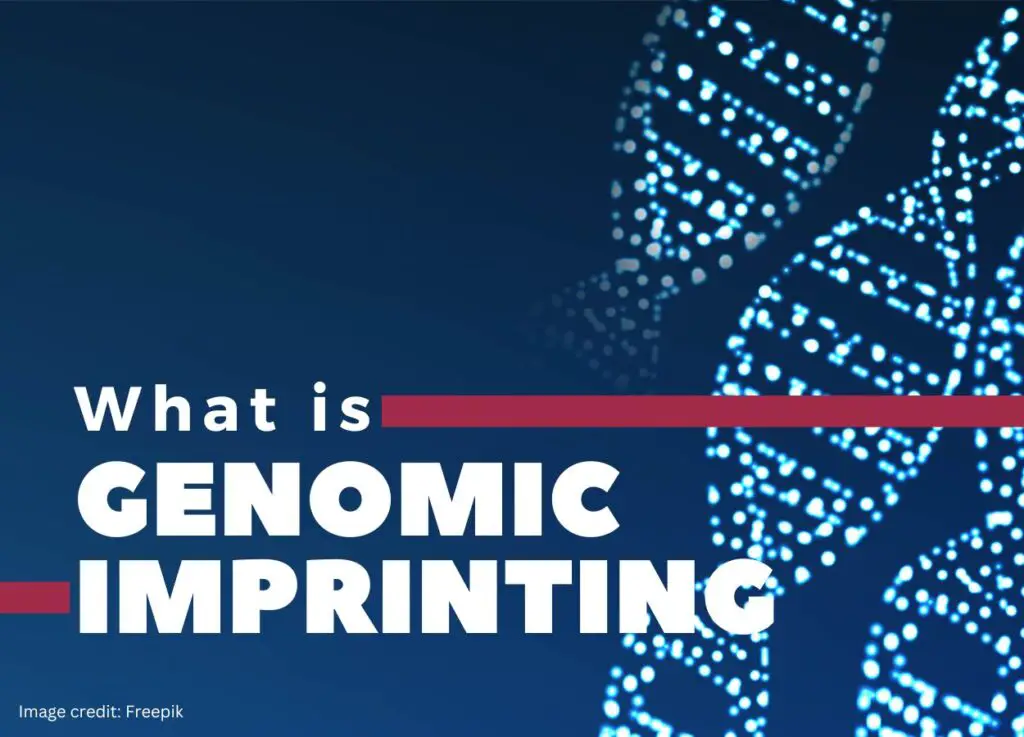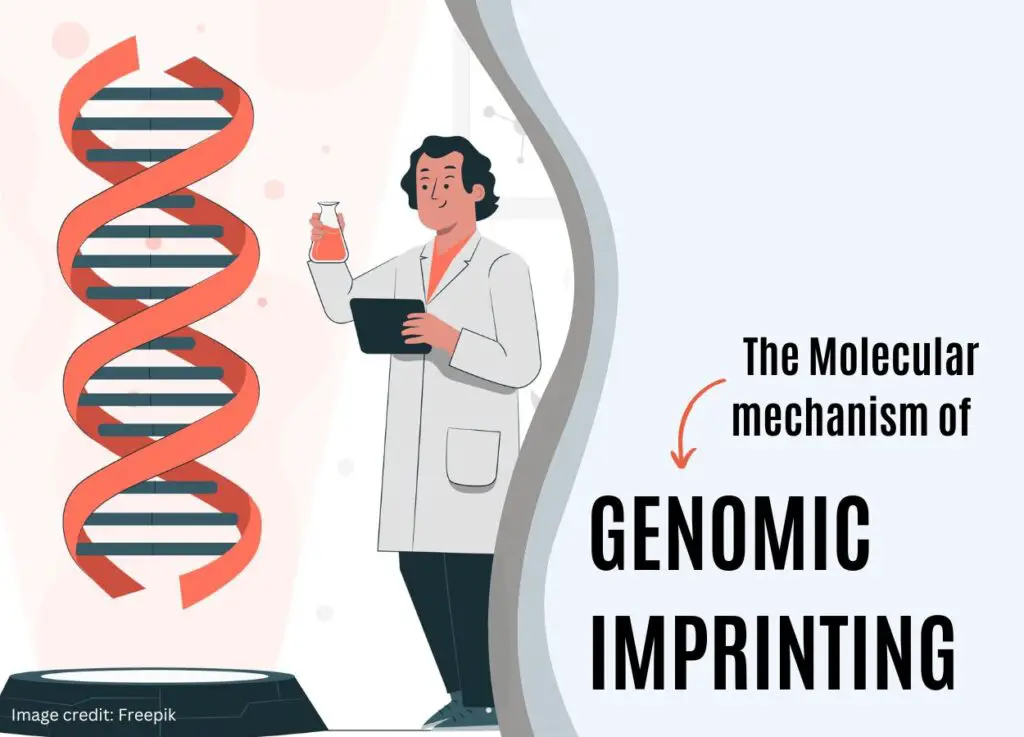“When only a single copy of a gene expressed from the pair— either from the father or mother and the other remained silent, the process is referred to as genomic imprinting.”
Do you know?
- Only mammals among all vertebrates have imprinted genes for embryonic and neonatal development.
- The imprinted gene is transcriptionally inactive.
- Both male and female offspring have equal chances of carrying imprinted genes.
- The very first imprinted gene identified was IGF2 in mice. The insulin-like growth factor 2 encodes fetal growth factors in mice.
Mendelian inheritance is the basic foundation of genetics, stating that genes are inherited from parents to offspring, elaboratively. Because students first learn this module while starting their genetic journey, they are well aware of it.
All major mechanisms and foundations are established and studied around these two Mendelian laws. In addition, genetic disorders are also explained in the context of either of these two laws. So we can say Mendelian inheritance is the basic foundation of genetics.
Majorly, all bodily genes follow the law of inheritance. However, what if I tell you that there are some genes that don’t obey Mendelian inheritance? The Mendelian laws and Morgan theories are borderline and basic foundations in genetics, as aforesaid.
More extensive research suggests that there are certain genes and mechanisms, beyond the explanation of common genetic theories. Genetic imprinting is one such mechanism. We are starting a series on this topic. We will write all the possible aspects of the present topic in different articles with an understandable explanation.
First, we are starting with a basic understanding of genomic imprinting. So what is genomic imprinting? Let’s find out.
Key Topics:
What is genomic imprinting?
(I can’t understand where to start!). Starting with the basics.
Every organism has a copy of genes, each inherited from the mother and the father. So each parent— during the developmental process contributes two sets of genes. For a particular gene, there are two copies, resultantly.
Most of the time, all copies of genes activate, oftentimes, for some genes— only a single copy activates to perform the functions. Notedly, the mechanism called epigenetic silencing allows the deactivation or silencing of genes.
These genes are imprinted genes. And let me tell you that, these genes 100% disobey the Mendelian inheritance pattern. Imprinted genes are expressed by non-mendelian inheritance. Such gene silencing occurs way back during the pre-developmental stage— sperm and egg maturation.
Imprinting is, however, epigenetically programmed, as recent theories suggest, and also occurs by external environmental factors. Throughout the life of any organism, epigenetics keep changing but two major epigenetic reprogramming occur during gametogenesis and embryogenesis.
Put simply, it’s like reprogramming the computer with a new software or program. Epigenetic reprogramming expresses and suppresses genes depending upon the requirement of the organism. It’s for survival in the end.
Note
Genomic imprinting has a pivotal role in embryonic and neonatal growth.
How does genomic imprinting occur?
Let’s understand the mechanism in layman’s terms.
Imprinted genes remain silent or unexpressed throughout the life of an organism. During the developmental stage of either sperm or egg, imprinting occurs by silencing a gene. The mechanism known as methylation, adds an active ‘methyl’ group to the gene and causes gene suppression.
The added methyl group— as it regulates the epigenetic, is known as the ‘epigenetic tag’. Like methylation, there are many other epigenetic tags that induce gene silencing. There are certain genes that come as an ‘inbuilt’ genomic imprint from the father and/or mother. Whereas others occur randomly and cause serious genetic problems.
Put simply the imprinted allele for a gene remains silent. Till now, around >200 imprinted genes are reported in humans.
It’s important to know that imprinting occurs during parental germ cell development, then participates in the fetus’s development. I.e. mitotic cell division of somatic cells. Put simply, the baby carries imprinted genes from either their mother’s egg or the father’s sperm cell.
DNA methylation is governed by a cell’s methylation machinery. It’s a complex process. The addition of CH3 (methyl group) to the cytosine residue of the DNA disallows synthesis enzymes to work. To know more about how methylation occurs, what the enzymes involved and what consequences it has please read this article: What is DNA Methylation?
What are the consequences of genomic imprinting?
We— humans, are diploid organisms. So we have two copies of all 23,000 genes. Imprinted genes, although present but silent by the epigenetic tag. Hence, we have only a single active or functional copy of imprinted genes, like the haploid condition.
The consequences of such a condition are very serious for an individual because if any mutation occurs in the active allele (of the imprinted pair), no backup active allele is present to restore normal function.
The condition is worse not only for dominant but also for any recessive mutation too. So imprinted genes are more likely to cause serious health problems in comparison to normal genes.
Mutation in the imprinted genes commonly results in cancer. Other noted conditions are Angelman syndrome, Prader- Willi syndrome, Beckwith-Wiedemann syndrome and infertility in males. In addition, there are several regions on various chromosomes where imprinted genes are located, majorly.
Imprinted genes are present in clusters and the region is known as Imprinting Control Regions (ICRs). ICRs regulate the overall process of how imprinting occurs.
Wrapping up:
I have one question, and I know many of you may have one! What if any mutation occurs in the imprinted allele? Technically, as it’s transcriptionally inactive, it may not cause any serious problems. However, no scientific explanation and evidence I obtained.
We can’t say anything about it, because we do not have any data. Genomic imprinting is yet not well-studied and understood. Epigenetics is entirely different compared with classic genetics. And indeed has an important role in a person’s life.
Recent research also manifests that alterations in epigenetic profiles also cause serious problems. If you wish to learn more, you can read this article: What is epigenetics?
That’s it for this article. In upcoming articles, we will comprehensively understand other topics related to genomic imprinting. Till then, do subscribe to our blog and bookmark this page.

